the mechanical efficiency of an engine relates to the NET TORQUE and HORSEPOWER at the FLYWHEEL compared to the GROSS TORQUE AND HORSEPOWER ,
you can also make the car faster by reducing the cars weight to horsepower ratio,reducing air drag and increasing efficiency in handling heat transfer, from oil and coolant to the air,
losses to friction and pumping losses can easily exceed 16% or more, so thats an area where some potential gains can be achieved.![/b]
prime friction producing areas include but are not limited too
(1) piston rings and piston skirts sliding over cylinder bore walls
(2) wrist pin,rod and main bearing friction
(3) camshaft bearing friction
(4) cam-lobe to lifter, push rod too lifter and rocker arm, and valve spring friction.
(5) timing chain to timing gear, or gear drive friction
(6) crankshaft to front and rear seal friction
(7) oil pump drive,gear, and internal pump gear friction
(8) pumping losses associated with drawing in and pumping out fuel/air mix
(9) windage losses from spinning rotating assembly dragging oil around crank case
(10) coolant pumping losses
the use of a windage tray , baffled oil pan and synthetic oil can reduce rotating assembly drag, this is frequently an area where 5-10 hp gains are over looked

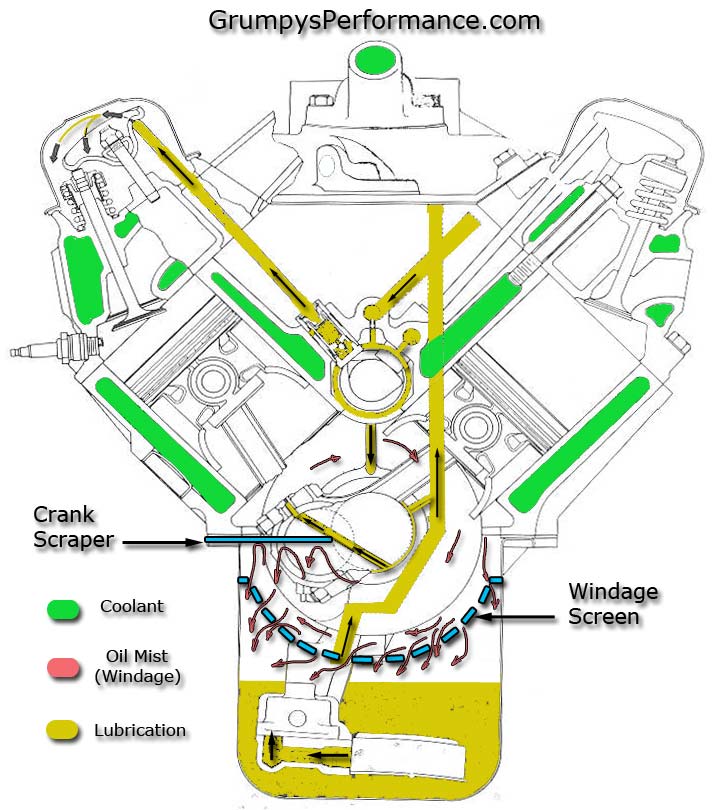

while helical cut gears will run smoother ,
( ESPECIALLY WITH THE STOCK 7 tooth SBC oil pump)
as you potentially have 2 or three gear teeth in various stages of gear tooth contact
(depends on the angle of tooth engagement)
and yes the design will reduce a tendency to produce a pressure pulse, I have not seen this as a major issue.
simply swapping to the standard volume and pressure BIG BLOCK 12 tooth oil pump in a SBC engine all but eliminates the pulse and pressure and volume issues a sbc oil pump has.
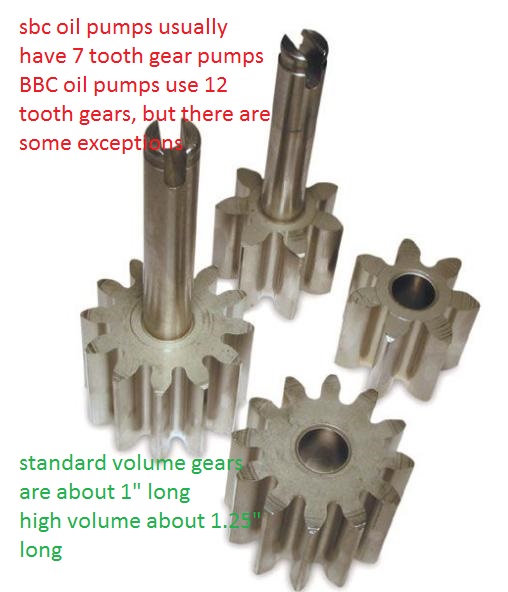
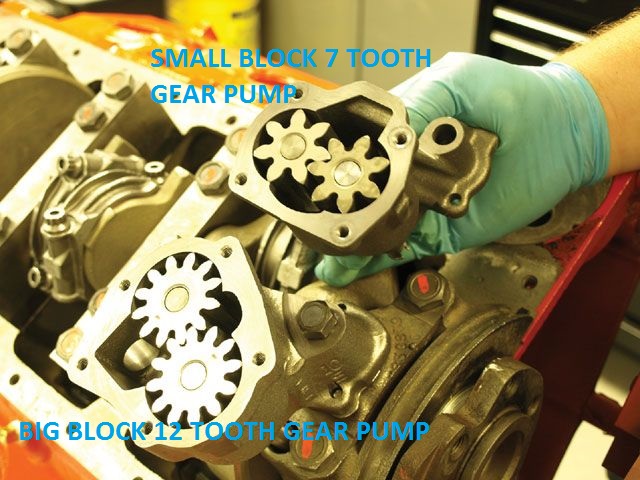
adding "ST" to the end of the existing melling SBC OIL PUMP part number denotes the helical gear set option
adding "ST" to the end of the existing melling part number denotes the helical gear set option
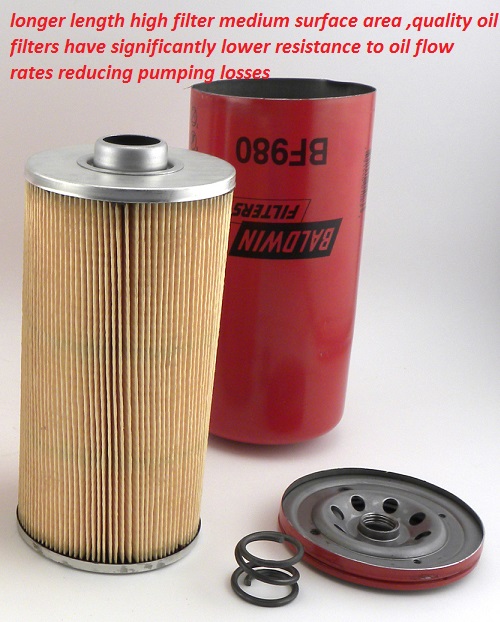
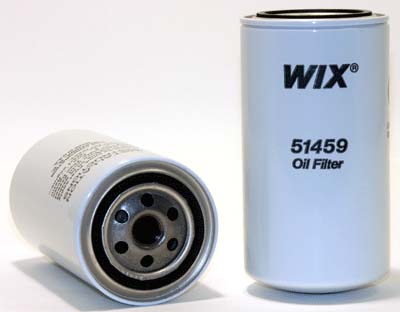
longer length oil filters with significantly more pleets and synthetic mediums have significantly lower resistance to oil flow reducing pumping losses slightly, but a couple horse power gained here and faster oil flow helps durability, and cooling of the bearings and valve train
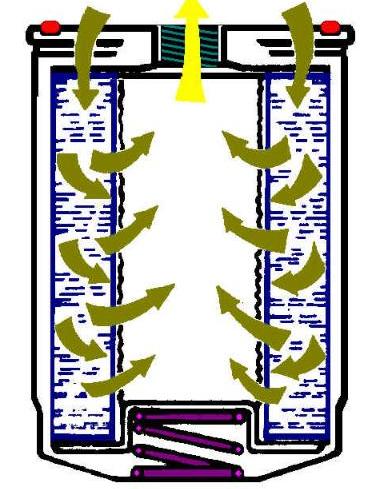

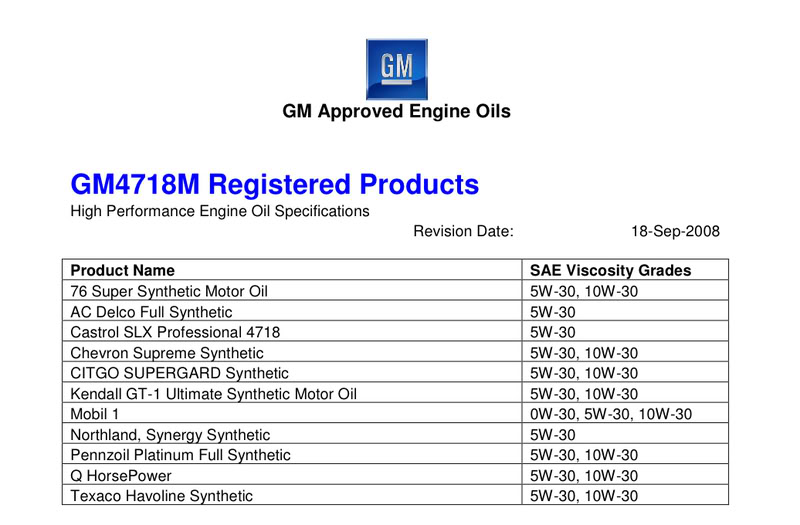
the suggestion to just change the differential gear oil, to a good compatible synthetic,almost always reduces friction losses
and perhaps order a magnet to place on the outside surface of the rear differential too trap and hold metallic debris,
that naturally comes off the gear wear surfaces to help reduce the wear,
that fine metallic crap floating around suspended in that differential gear oil could cause thats very easily reduced.
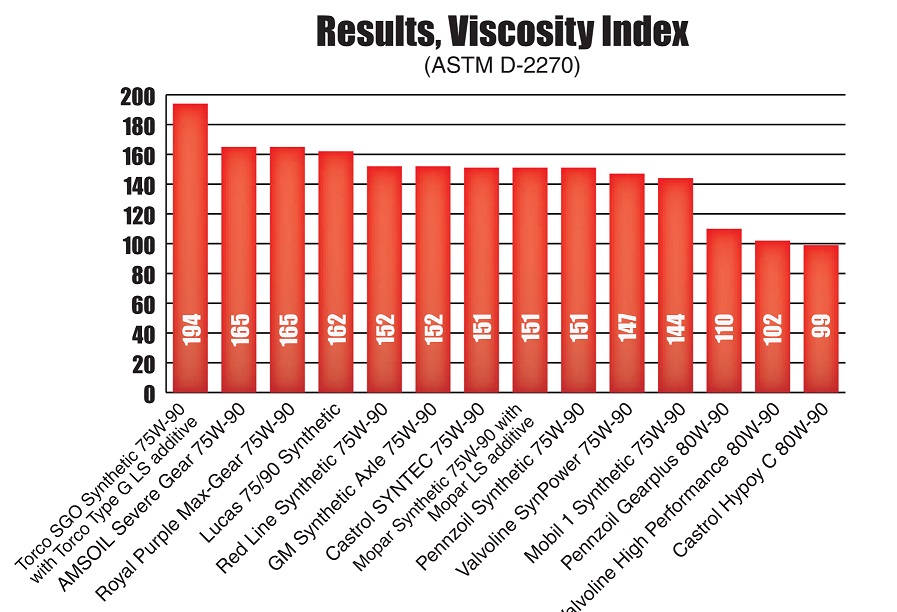
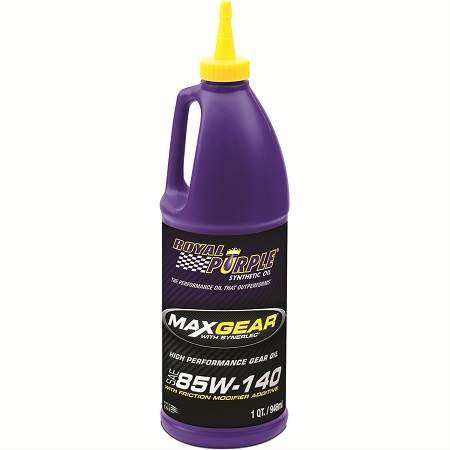
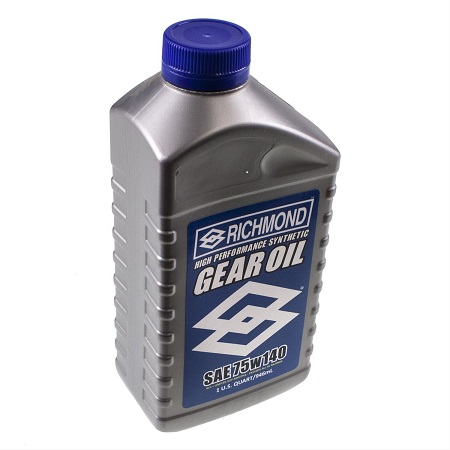
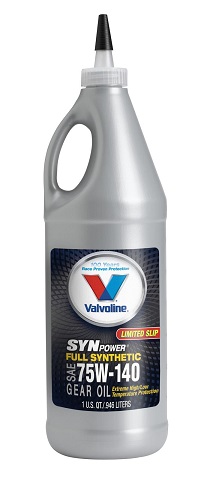
SHOP CAREFULLY , WHEN YOU GO TO BUY AN OIL PAN<AND ASK LOTS OF QUESTIONS ABOUT WHAT WILL FIT YOUR CAR CORRECTLY AND ASK FOR SUGGESTIONS ON MATCHING COMPONENTS OR PARTS THAT WON,T FIT
MILODON,
http://www.milodon.com/
CHAMP
http://www.champpans.com/products/c/oil-pans/
CANTON,
https://www.cantonracingproducts.com/category/1501/Chevy-SS--Road-Race-Oil-Pans/1.html
MOROSO
http://www.moroso.com/
AVIAID
http://aviaid.com/shopsite_sc/store/html/ws_oilpns_sbc.html
http://www.magnet4less.com/product_info.php?cPath=3_27&products_id=254
a few areas that can be improved with modifications or changes
Even with roller valve train there is a break in period where the metals have to "mate". on flat tappet valve trains and non-roller rocker valve trains use of a good moly assembly lube is critical, Break in oils and assembly lubes have high pressure additives to help protect these new surfaces while this "mating" is taking place. Regular motor oil does not, always have the required additives or enough of them. thus using a good moly based assembly lube on lifters and bearings helps reduce wear , on roller rockers and roller lifter a mix of 50% assembly lube and 50% MARVEL MYSTERY OIL, thins this moly mix viscosity allowing it to penetrate roller bearings far faster,as an assembly lube during initial start-up.
the main reasons you have a pressurized lubricant system is partly to prevent direct metal to metal contact thus greatly reducing wear,and to efficiently transfer heat to the coolant system. the reason there is room between moving components in the valve train , and rotating assembly between moving components is to provide a constant dependable path, for and consistent and dependable lubricant flow rates ,of generally pressurized oil flow, between the moving components ,the NEED for cooling the parts with that lubricant flow,the NEED for lubricant that absorbed heat to constantly be replaced, witth cooler lubricant so heat is rapidly absorbed and transferred from components like bearings and valve springs, and room for thermal expansion of the metal components as the HEAT, loads and rpms increase
http://www.substech.com/dokuwiki/do...e_design_for_high_performance_engine_bearings
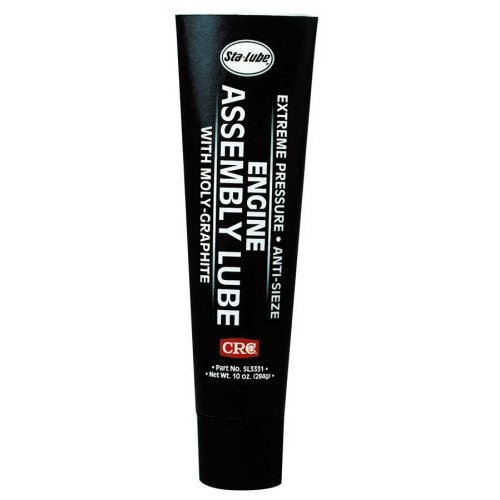
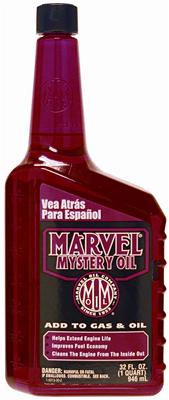
(1) use a thinner viscosity synthetic oil, that takes less mechanical force to pump
(2)IF you use a wet sump, oil system use a deep baffled oil pan with, properly fitted, crank scraper and windage screen
(3) lower oil pressure to minimum required to maintain 100% durability
(4) switch to dry sump oiling system
(5)low tension oil rings
(6) low friction piston surface coatings
(7) run a electric water pump
(8) use a clutch fan or electric cooling fans
(9) have alternator cut off switch that kicks in at high rpms
(10) use synthetic oil in differential and transmission
(11) roller lifters, roller rockers, valve train oilers
(12) minimal valve spring pressures required
(13)run a very low restriction exhaust with an (X) pipe
(14) roller cam bearings
(14) reduce the cars weight
(15) reduce the cars air resistance
(16) increasing compression to the limits the fuel octane permits increases burn efficiency
(17) fast burn combustion chamber design reduces pumping losses
(18) longer connecting rods for a better rod/stroke ratio reduces friction loads on rings and bores
(19) lighter weight in the rotating assembly reduces inertial loads
you can also make the car faster by reducing the cars weight to horsepower ratio,reducing air drag and increasing efficiency in handling heat transfer, from oil and coolant to the air,
losses to friction and pumping losses can easily exceed 16% or more, so thats an area where some potential gains can be achieved.![/b]
prime friction producing areas include but are not limited too
(1) piston rings and piston skirts sliding over cylinder bore walls
(2) wrist pin,rod and main bearing friction
(3) camshaft bearing friction
(4) cam-lobe to lifter, push rod too lifter and rocker arm, and valve spring friction.
(5) timing chain to timing gear, or gear drive friction
(6) crankshaft to front and rear seal friction
(7) oil pump drive,gear, and internal pump gear friction
(8) pumping losses associated with drawing in and pumping out fuel/air mix
(9) windage losses from spinning rotating assembly dragging oil around crank case
(10) coolant pumping losses
the use of a windage tray , baffled oil pan and synthetic oil can reduce rotating assembly drag, this is frequently an area where 5-10 hp gains are over looked



while helical cut gears will run smoother ,
( ESPECIALLY WITH THE STOCK 7 tooth SBC oil pump)
as you potentially have 2 or three gear teeth in various stages of gear tooth contact
(depends on the angle of tooth engagement)
and yes the design will reduce a tendency to produce a pressure pulse, I have not seen this as a major issue.
simply swapping to the standard volume and pressure BIG BLOCK 12 tooth oil pump in a SBC engine all but eliminates the pulse and pressure and volume issues a sbc oil pump has.


adding "ST" to the end of the existing melling SBC OIL PUMP part number denotes the helical gear set option
adding "ST" to the end of the existing melling part number denotes the helical gear set option


longer length oil filters with significantly more pleets and synthetic mediums have significantly lower resistance to oil flow reducing pumping losses slightly, but a couple horse power gained here and faster oil flow helps durability, and cooling of the bearings and valve train



the suggestion to just change the differential gear oil, to a good compatible synthetic,almost always reduces friction losses
and perhaps order a magnet to place on the outside surface of the rear differential too trap and hold metallic debris,
that naturally comes off the gear wear surfaces to help reduce the wear,
that fine metallic crap floating around suspended in that differential gear oil could cause thats very easily reduced.




SHOP CAREFULLY , WHEN YOU GO TO BUY AN OIL PAN<AND ASK LOTS OF QUESTIONS ABOUT WHAT WILL FIT YOUR CAR CORRECTLY AND ASK FOR SUGGESTIONS ON MATCHING COMPONENTS OR PARTS THAT WON,T FIT
MILODON,
http://www.milodon.com/
CHAMP
http://www.champpans.com/products/c/oil-pans/
CANTON,
https://www.cantonracingproducts.com/category/1501/Chevy-SS--Road-Race-Oil-Pans/1.html
MOROSO
http://www.moroso.com/
AVIAID
http://aviaid.com/shopsite_sc/store/html/ws_oilpns_sbc.html
http://www.magnet4less.com/product_info.php?cPath=3_27&products_id=254
a few areas that can be improved with modifications or changes
Even with roller valve train there is a break in period where the metals have to "mate". on flat tappet valve trains and non-roller rocker valve trains use of a good moly assembly lube is critical, Break in oils and assembly lubes have high pressure additives to help protect these new surfaces while this "mating" is taking place. Regular motor oil does not, always have the required additives or enough of them. thus using a good moly based assembly lube on lifters and bearings helps reduce wear , on roller rockers and roller lifter a mix of 50% assembly lube and 50% MARVEL MYSTERY OIL, thins this moly mix viscosity allowing it to penetrate roller bearings far faster,as an assembly lube during initial start-up.
the main reasons you have a pressurized lubricant system is partly to prevent direct metal to metal contact thus greatly reducing wear,and to efficiently transfer heat to the coolant system. the reason there is room between moving components in the valve train , and rotating assembly between moving components is to provide a constant dependable path, for and consistent and dependable lubricant flow rates ,of generally pressurized oil flow, between the moving components ,the NEED for cooling the parts with that lubricant flow,the NEED for lubricant that absorbed heat to constantly be replaced, witth cooler lubricant so heat is rapidly absorbed and transferred from components like bearings and valve springs, and room for thermal expansion of the metal components as the HEAT, loads and rpms increase
http://www.substech.com/dokuwiki/do...e_design_for_high_performance_engine_bearings


(1) use a thinner viscosity synthetic oil, that takes less mechanical force to pump
(2)IF you use a wet sump, oil system use a deep baffled oil pan with, properly fitted, crank scraper and windage screen
(3) lower oil pressure to minimum required to maintain 100% durability
(4) switch to dry sump oiling system
(5)low tension oil rings
(6) low friction piston surface coatings
(7) run a electric water pump
(8) use a clutch fan or electric cooling fans
(9) have alternator cut off switch that kicks in at high rpms
(10) use synthetic oil in differential and transmission
(11) roller lifters, roller rockers, valve train oilers
(12) minimal valve spring pressures required
(13)run a very low restriction exhaust with an (X) pipe
(14) roller cam bearings
(14) reduce the cars weight
(15) reduce the cars air resistance
(16) increasing compression to the limits the fuel octane permits increases burn efficiency
(17) fast burn combustion chamber design reduces pumping losses
(18) longer connecting rods for a better rod/stroke ratio reduces friction loads on rings and bores
(19) lighter weight in the rotating assembly reduces inertial loads
Last edited by a moderator:
